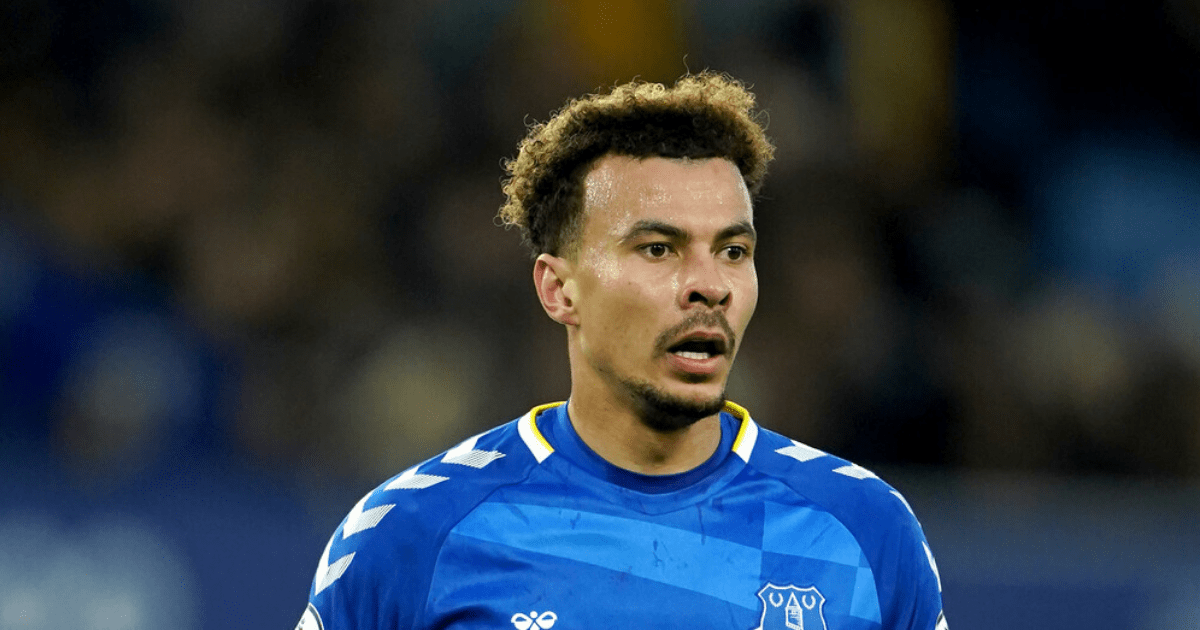Another Injury Blow for Dele Alli
Dele Alli, the Everton star, has been dealt another blow as he is forced to undergo surgery again following a ten-month absence due to injury. Alli sustained a groin injury while on loan at Besiktas last March and has been out of action since.
No Return Timeframe
There is currently no timeframe for Alli's return as he recovers from surgery, according to Everton manager Sean Dyche. The midfielder returned to the Toffees in the summer but has not made an appearance for the club this season.
Positive Signs Before Setback
Alli had been making progress in his recovery and was back training on grass, as reported by Dyche in December. However, the latest setback means the 27-year-old will have to wait longer to return to the pitch.
Loan Stint in Turkey
Alli had a loan spell at Besiktas, where he made 15 appearances and scored three goals. He then returned to Everton, where he has played 13 times since joining from Tottenham in January 2022.
Contract Expires this Season
Alli's contract at Goodison Park is set to expire at the end of this season. It remains to be seen how his injury and surgery will impact his future with the club.
Frequently Asked Questions
How do you choose the right football boot for your playing surface?
Selecting the appropriate football boots is dependent on the type of surface you’ll be playing on. It is recommended to use metal studs for natural grass pitches. They provide traction as well as stability. For artificial turf, boots that have a sole with flat or numerous rubber studs will offer a better grip. Indoor courts (IN), which are a type of court, require non-marking soles. This is to prevent surface damage and ensure proper movement.
Can the selection of socks influence a soccer player’s performances?
Absolutely. Football socks protect and support the player’s foot during intense play. They keep the shinguards in place and prevent blisters through friction reduction. They also cushion the feet. A good pair of football socks can improve a player’s comfort, which can indirectly influence their performance on the pitch.
Why do football players need to wear shinguards?
Shin guards should be a part of every footballer’s equipment as they protect the lower legs from injury when tackles or collisions occur. They protect the shins by preventing severe injuries like fractures and severe bruising. Wearing shin guards is enforced by football’s governing authorities to promote player safety within the sport.
Is it necessary to wear football-specific clothing, or can I wear any athletic gear?
Although you can technically play football with any athletic clothing, it is recommended that you wear football-specific apparel as they are designed to improve performance and comfort. Jerseys and shorts are usually made of lightweight, breathable materials that allow for optimal airflow, reducing overheating and sweat build-up. The fit allows for full range of movement, which improves agility and response during play.
What are the best goalkeeper gloves?
Goalkeeper gloves that have a latex-coated palm provide the best grip for different playing conditions. The density and thickness of the latex can be changed to balance grip and durability. Gloves that have finger protection systems (including spines and stiffening materials) can help prevent hyperextension of the fingers. To allow goalkeepers to perform to their full potential, gloves need to be comfortable and well-fitted.
Statistics
- Research has indicated that around 60% of football-related ankle injuries could be mitigated with the correct choice of footwear.
- Over 90% of professional football players wear boots with synthetic uppers for better performance and durability.
- Data shows that thermo-bonded footballs, known for their consistent performance, are preferred by 65% of professional football clubs for matches.
- Studies show that the proper use of shin guards can reduce the risk of injuries in football players by up to 70%.
- Globally, the demand for lightweight football cleats has risen by about 30% in the past decade, reflecting changes in player preferences and playing styles.
External Links
soccer.com
podiatrytoday.com
uksoccershop.com
puma.com
footy.com
How To
How to Choose the Right Size for Football Cleats
Finding football cleats that fit well is essential for ensuring comfort and maximizing performance. The cleats should have a space of about a thumb-width between the longest toe of your foot and the cleat’s end. They should fit snugly around the midfoot with little to no movement in the heel. The upper part of cleats should be tight to provide a secure fit, but flexible to allow for normal foot movement. Try on the cleats using the socks that you will wear during matches. This way, you can get a good feel for how they fit.
Did you miss our previous article…
https://www.sportingexcitement.com/football/premier-league/bizarre-reason-chelsea-are-playing-aston-villa-on-friday-night-despite-fa-cup-clash-not-being-on-tv/

